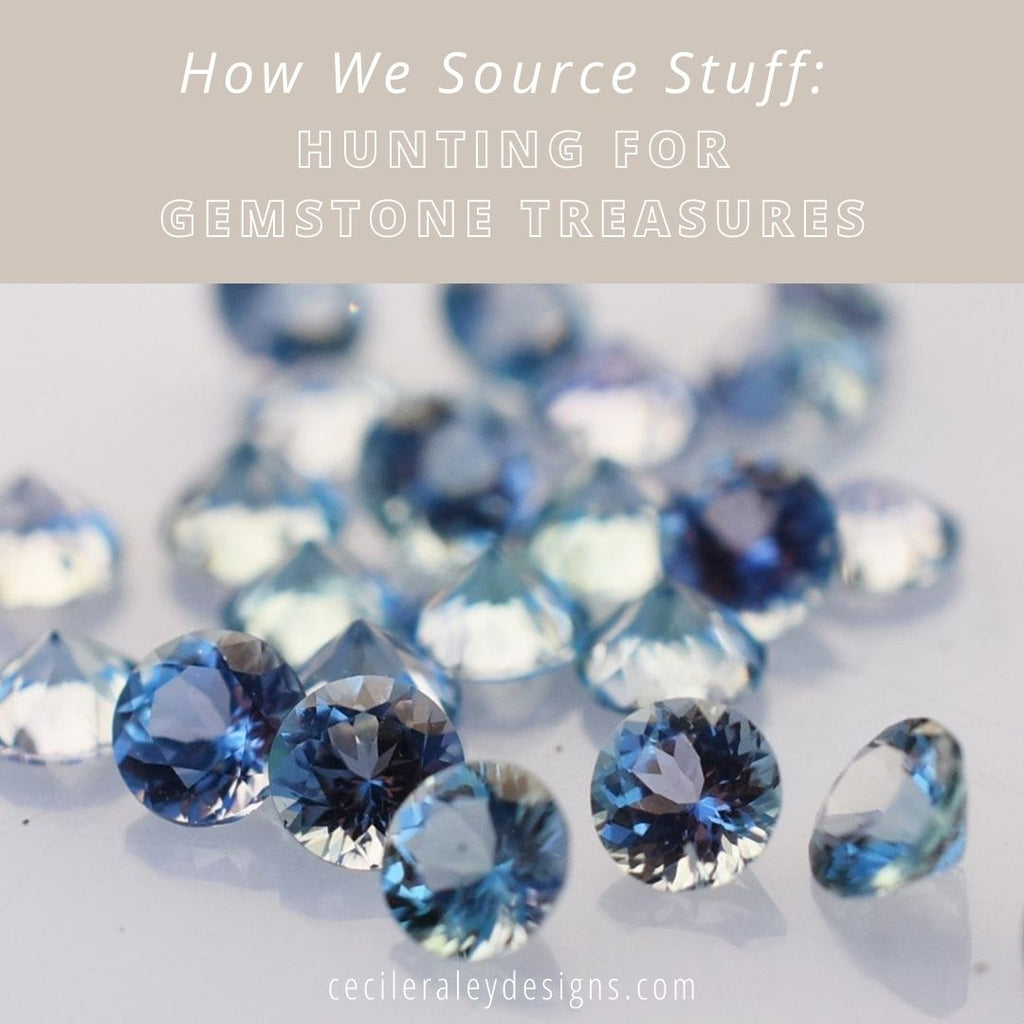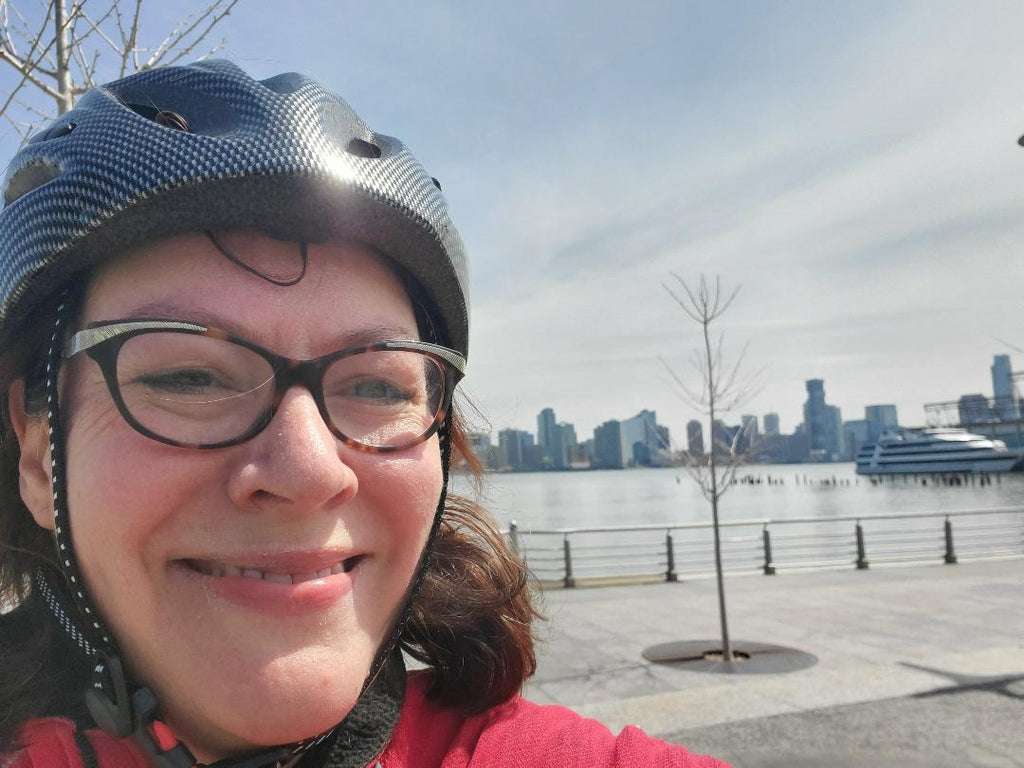How We Source Stuff: Hunting for Gemstone Treasures
Since Cecile Raley Designs started selling gems on Etsy, the number of shops offering cut stones online has pretty much exploded. In addition, international gem cutting centers like Jaipur, India can now sell gemstones directly to you without a “middle-man” or “retail shop.”
Because I was always more fascinated with unusual and rare gemstones, I found myself gradually moving more in the direction of “curating” - buying and showing only special and selected gems, rather than buying and selling large mixed quality parcels. I also never wanted to sell gems like citrine or amethyst or blue topaz because they are too ubiquitous. If you are a treasure hunter, then ubiquitous is a bad word. And I think of myself as a treasure hunter.
So what are the considerations for a treasure hunter? What counts as a true gemstone treasure?
Gemstone treasures have to attract the eye. It is a basic rule. If you don’t like the way it looks, don’t buy it. (Why would you buy an ugly dress?). Certain kinds of brown dravite tourmaline are fairly rare, but it’s not a color that many people enjoy, and so it has never interested many buyers. But both the "Jedi" red and "cobalt" blue spinel as well as the bright turquoise of Paraiba tourmaline just forces the eye to look. Alternatively, compare Namibian and Russian demantoid. Both are rare, but Russian demantoid is significantly more eye catching because it’s not brownish or olive green. (Sidenote: The rarest of all Russian demantoids is actually the yellowish brownish andradite garnet, and it is, nevertheless, the least expensive).
Gemstone treasures have to be rare. Both citrine and amethyst are pretty, and some amethyst can be downright gorgeous. But unless you consider rare origins, there’s a lot of gorgeous amethyst out there. So even though amethyst from Russia or Morocco are now rare, they do not fetch a high market price. Alternatively, Tanzanite is fairly available on the market despite the fact that it has only one origin. This means that even in large sizes, Tanzanite is not as expensive as unheated sapphire in the same color. However, single origin can make something very rare if it is not found in sufficient quantities or supplies have run out. Such is the case with Benitoite. Benitoite is a lovely blue similar to sapphire but it’s not neon and eye catching like hauyne or even top-quality sapphire; its value is in its rare single origin.
Gemstone treasures should not be enhanced. Let’s face it, most of us are attracted to the pure and unadulterated. And perhaps rightfully so. Gemstone enhancement, i.e., heating, irradiating, oiling, are “beautification devices” that make a gem seem better than it is or to appear to be something it is not. But it also moves a stone in the rare category into something less rare, as it is a way to enable a more readily available gemstone to rival the beauty of the one that is natural. Emerald is routinely oiled on a sliding scale, and the more oil used, the lower the price. One reason why Afghani and Russian emeralds are so sought after is because, in addition to the rare origin, they are so clean that they need little to no oiling (even if one did oil them, very little would be absorbed by the gems because they do not have enough fissures). On average, Colombian emeralds are not as clean and require more oiling, but the extraordinarily clean Colombian gems, which also have a neon like color, will fetch a price equal to Russian emeralds, if not higher.
Gemstone treasures have rare qualities. There are many ways to think about rare qualities of gems. Color change is one of them and is probably the main reason why alexandrite is still valued so highly, despite its mostly “muddy” daylight appearance. (Sidenote: we can easily source alexandrite but we prefer to market the actually rarer blue garnet which also has a much better color change and clarity). Another rare quality of a gem is dichroism or trichroism, which makes a gem appear different colors from different angles. Unheated tanzanite has trichroism, iolite is dichroic but unfortunately it’s secondary color is brown. Kornerupine is trichroic showing green, blue and lavender.

Do gemstone treasures have to have a good cut? Generally, cut matters – a lot – because a good cut tends to increase how much we are attracted to a gem. But there are two caveats to that. One is that if the material is so rare that any bit of “weight loss” in cutting matters for value and price, it is best avoided, i.e. recutting a cushion Vietnamese spinel into a round (the gemstone rough lends itself to a cushion or long pear cut). Rare gems do get recut, but usually the seller will increase the price accordingly so that the buyer pays the same even though the gem is now smaller. The second caveat is that in some naturally darker or more included gems, such as Burma ruby or Colombian emerald, it’s not always necessary to cut the gem down to eliminate window or remove inclusions as the inclusions will obscure both anyway. Finally, rare gems are almost never cut into very unusual cuts, like a kite or trapezoid or tapered baguette. For shapes that don’t respect the crystal of the gemstone rough, it’s best to use inexpensive material. So yes, cutting matters a lot, but to a degree only: it matters insofar as it enhances the gem, not insofar as it entices the buyer to purchase an unusual cut.
So what are our favorites at Cecile Raley Designs? The answer to that is probably not hard to discern given our listings. While we try to offer a broad array of gems for design purposes, the gems closest to our heart are only a small number. Here they are -- can you guess which of the criteria above fits these gems? All of them fit more than one.









